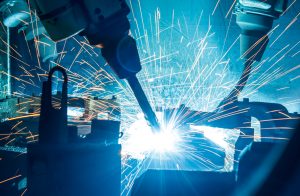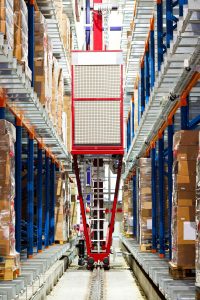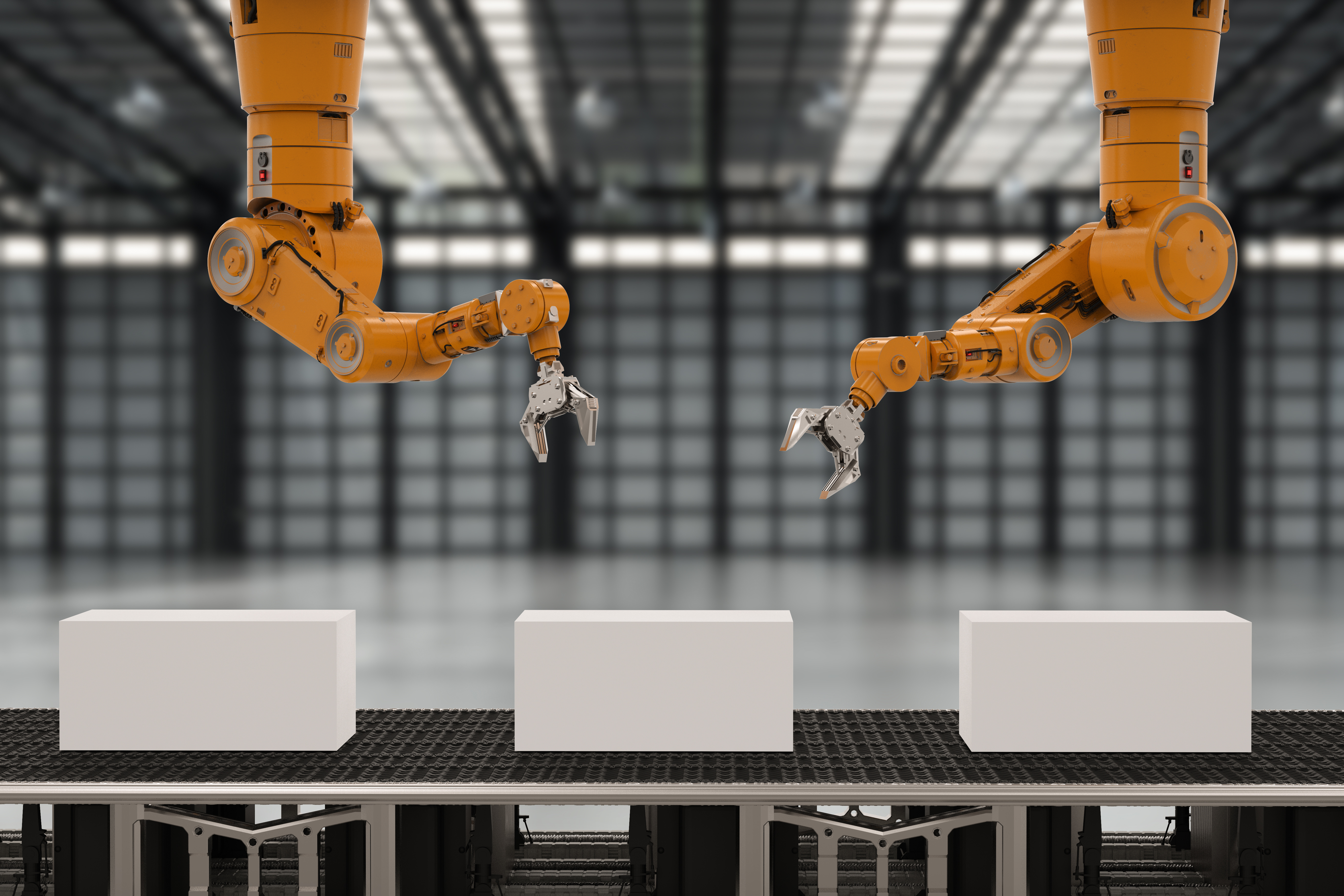The ultimate cyber-physical system is best described in simple engineering terms as a classic closed-loop system where each piece of equipment is connected to one another by reacting to its surrounding environment through a nimble feedback loop. However, if you are a Star Wars fan like myself, then this unifying concept in many ways embodies another iconic image— that of Yoda, the Jedi Master, manipulating the Force by simple thought. This unifying concept, in turn, drives industrial convergence.
The magic of industrial convergence comes when systems have the built-in intelligence and self-awareness to adjust and act according to their changing environment, without the need for manual intervention. Such an automated, smart factory is poised for high productivity as well as high product quality levels. Consider, as an example, the robots produced by Boston Dynamics. Equipped with sophisticated sensors, complex algorithms, motors and actuators, these robots gather information, interpret this data, and dynamically adapt to the environment around them in their quest to complete their given tasks.
This level of autonomy represents the promise of Industry 4.0, the implementation of artificial intelligence (AI), big data, and the industrial internet of things (IIoT) in factories. Making industrial convergence possible requires underlying technologies such as sensors, actuators, and digital and analog IOs; in other words, the key functions required by industrial control systems inside these automated factories. From a technology standpoint, however, supporting industrial convergence requires meeting criteria that weren’t really a concern in older factory environments.

Robotic welders on an automotive manufacturing line provide an example of a smart factory environment.
Robots at Work
Today’s factories are a bustling blend of human and robotic activity as Industry 4.0 permeates the manufacturing landscape. Electronics assembly, testing, picking and packaging—these are among the tasks that robots can now handle in manufacturing facilities. Robots are pitching in to help make cars, computers, appliances, and a host of other goods. Indeed, the elements of Industry 4.0 can be found beyond factories. Inside Amazon’s warehouses, for example, you’ll find people working alongside robots, with the robots handling repetitive tasks and the people monitoring and troubleshooting them. Together, they ensure that items ordered online are packaged and shipped out promptly. Even products that you wouldn’t expect to be mass produced on a line can be created with the help of automation. Consider the artisan bakery Tartine in San Francisco, California. Now, the very definition of handcrafted artisan bread goes against the concept of mass production. Yet Tartine’s owner has discussed the benefits of placing coworking robots alongside the bakers, perhaps helping to load bread into ovens and perform other tasks that would make the process more efficient as the bakery expands its operations globally. In Japan, a company called Spread has created an automated indoor lettuce factory where robots plant the seeds, raise the vegetables, and carry lettuce heads to a packing line. These examples of creative collaboration are referred to as Industry 5.0.
According to an article published on Recode, the market for industrial robots is projected to grow from $12.3 billion in 2016 up to $33.8 billion by 2025. Notes the article, “…a new generation of manufacturing robots is emerging that is more collaborative, smaller and more perceptive than traditional machinery.” Smaller, smarter robots call for electronic components that can deliver on both counts.

In warehouses, robots are making repetitive tasks such as moving boxes more efficient.
Smarter and Smaller
Industrial sensors, programmable logic controllers (PLCs), and other essential automated factory components are shrinking while, at the same time, providing increased functionality. They must be able to operate reliably over extended periods of time in harsh environments, where electrostatic discharge (ESD), electromagnetic interference (EMI), radio frequency interference (RFI), and high-amplitude transient pulses are prevalent. Also, these tiny devices must be powered efficiently with minimum heat and power dissipation.
Sensors collect voluminous amounts of data from the factory environment, processing it in real time to enable the actions that support adaptive manufacturing. They must, however, fit inside narrow assemblies or be integrated into tiny valves and actuators. IO-Link technology is making sensors smarter by enabling factory personnel to change their settings remotely based on real-time feedback on the health and status of other sensors on the line. As for PLCs, with their shrinking footprint, these controllers are being placed closer to the edge of the manufacturing floor, directing the flow of activity.
Saving Power and Space
In the industrial communications space, advanced industrial automation technologies must support a continued commitment toward footprint reduction, power savings, and flexibility. Key components for these systems include:
- Isolation ICs which provide complete galvanic isolation between two power domains. Maxim’s digital signal isolators, for example, provide up to 5kV of isolation and support data rates up to 150Mbps, while reducing power requirements and using less board space than, say, optocouplers.
- Digital I/O and analog I/O solutions that are small, efficient, and feature safe demagnetization. Digital I/O solutions transmit and receive high-voltage binary signals between a central controller and an industrial sensor or actuator. Analog I/O solutions convert analog signals sent to and received from remote sensors and actuators into the digital domain so that the signals can be processed by the digital controller.
- IO-Link transceivers and binary drivers that are low power, come in small WLP packages, and feature on-board diagnostics. Maxim’s IO-Link transceivers, for instance, act as the PHY interface to a microcontroller running the data-link layer protocol while supporting up to 24V digital inputs and outputs. The company’s binary drivers, which support high-side, low-side, or push-pull configurations along with normally open or normally closed logic, integrate transient protection that meets IEC 60255-5 surges up to ±3kV and OTP programming options to set 3.3V or 5V outputs.
- Robust communications solutions that offer high data rates in compact sizes

Jeff DeAngelis, Managing Director,
Industrial Communications, Maxim
Integrated
Over the years, Maxim has also created new pathways to Industry 4.0. Our demonstration platforms allow designers to quickly prototype and create industrial control solutions. Unveiled in 2014, our micro-PLC demonstration platform consisted of a first-generation industrial control chipset that reduced the PLC footprint by 10x while dissipating 50% less power. This platform supported the movement of decision-making and control closer to the edge of the manufacturing line. Two years later, our Pocket IO PLC demonstration platform highlighted the possibilities of adaptive manufacturing in a form factor of less than 10 cubic inches, while enabling factory control via an iPad.
So, what’s coming up? I can simply say now that our next industrial IoT platform will continue the momentum of enabling designers to further advance the promise of industrial convergence.
Hint to the reader:
If you plan to attend electronica 2018 (Nov 13 – 16, 2018; Munich/Germany), plan in a visit to Maxim’s booth in Hall C4, booth #440, to learn more!











